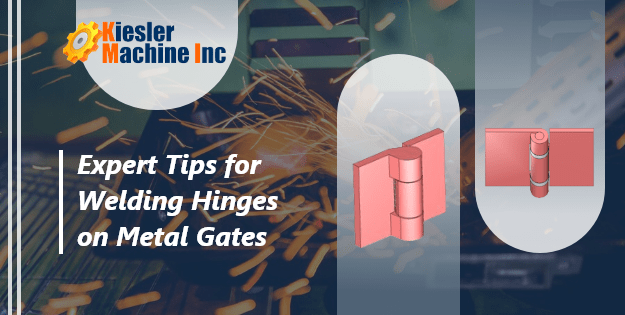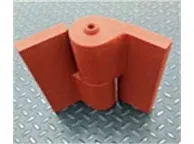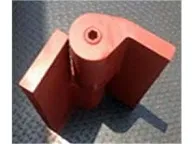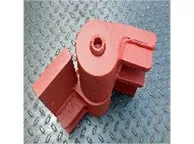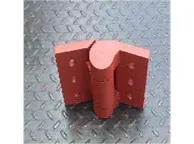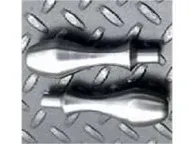Hinges are used to secure doors, gates, gaurds, machinery, and other items and enable the facile opening of these objects. While some hinges are equipped with fasteners, others necessitate welding and are known as weld-on hinges. These weld-on hinges are known to offer greater security than their bolt-on counterparts. They are made of materials such as stainless steel and aluminum, which further adds to their robustness. Although these hinges are commonly seen at various commercial and industrial facilities, you may not know how they are welded. This post offers insights into the installation of different weld-on hinges.
An Overview of Popular Types of Weld-On Hinges
This section provides you with an overview of various types of weld-on hinges.
- Barrel Hinges: Barrel hinges got their name from barrel-shaped designs and were earlier used to secure jewelry boxes, small cabinets, and so on. Nowadays, these hinges are used to secure doors and gates in military and defense organizations, medical and research facilities, commercial enterprises, and construction sites.
- Mortise Hinges: Mortise hinges feature leaves that can be placed on the plate or mortised into the jamb or door. These hinges are hidden from the surface of the door and create a seamless appearance while allowing for a wider door swing.
- Butt Hinges: These hinges feature two rectangular leaves with knuckles attached to the pin. These hinges are commonly used on gates, as well as full-sized doors. These heavy duty butt hinges also come with both removable and non-removable pins.
- Ball Bearing Hinges: The ball-bearing hinges are more like a standard butt hinge, but the only difference is at the pivot point, where there are hidden bearings positioned in the middle of the knuckles of the hinge.
- Pivot Hinges: These hinges are designed for use on pivot doors and gates. They feature a pivot that is usually mortised on the door and a pivot system.
How to Weld Hinges on Gates?
Before we get into the details of how to weld hinges on metal gates, we need to source the materials needed for the installation. Here's the list of materials required to weld hinges on gates.
- Metal gates and doors
- Welding machine
- Welding helmet, gloves, and protective clothing
- Clamps and locking pliers
- Angle grinder with cutting and grinding discs
- Measuring tape and marker
Here's a general guide on how to weld hinges on the metal gate
- Prepare the Surface: Use a degreaser or wire brush to clean the area where the hinges will be welded. This helps remove contaminants that could interfere with the weld.
- Mark the Position: Next, use a measuring tape and marker to mark the position of the gate hinges. Ensure proper alignment for smooth opening and closing.
- Clamp the Hinges: Clamp the hinges on the gate and double-check their alignment using a level. You can measure the distance of the clamped hinge from the bottom to ensure its appropriate placement.
- Select the suitable welding technique: A hinge can be welded on the metal gate using any of the methods given below. .
- MIGWelding: Metal Inert Gas (MIG) welding is appropriate for welding thicker metal hinges and provides a strong, clean weld.
- TIG Welding: TIG welding provides more control over the weld than MIG and is suitable for welding hinges made of stainless steel, aluminum, and so on.
- Stick Welding: This method is effective in outdoor conditions and can be used with most metals. It's generally easier to use with thicker materials.
You can choose any of these welding techniques as per your requirements.
- Perform Welding: Wear your safety gear and clothing before you begin welding the hinge onto the gate.
- Tack Welds: Make small tacks at the corners of the hinge to hold it in place and prevent warping due to heat.
- Check the Weld and Analyze the Movement of the Gate: See if the gate opens and closes freely before proceeding with the full welding. If not, make the necessary adjustments.
- Complete the Welds: Once the hinge is tacked securely, complete the weld around the hinge parts that will bear the load. Ensure the depth is enough to hold the hinge but not weaken the metal.
- Check for Heat Distortion: Welding generates heat, which can cause the metal to warp. Recheck the alignment after welding to ensure no distortion has occurred.
- Clean the Welding Contaminants and Recheck: Despite these precautions, there may be slight extra bulging around the hinge area. If you notice any, you can grind them and smoothen the area. Clean the welded area using a wire brush.
- Test the Gate: Check the gate a few times to ensure it is opening and closing freely.
Precautions to be Taken While Working with Heavy-Duty Weld-on Gate Hinges
Although the welding of hinges is always performed by experienced professionals, certain precautions must be exercised while working with heavy-duty weld-on gate hinges.
- Wear protective gear while welding.
- Use the right equipment for welding.
- Begin the process only if you have all the required components necessary to secure the hinge to the gate.
- Perform welding in a well-ventilated area.
- Keep inflammable materials away from the sight of welding.
If you are seeking premium-quality, heavy-duty weld-on gate hinges or door hinges, make sure to source them from a reputable manufacturer and supplier. Kiesler Machine is a dependable source for superior-quality heavy-duty weld-on gate hinges. The company offers these hinges with custom specifications to meet your requirements. Contact the team at Kiesler Machine today to discuss your requirements.

